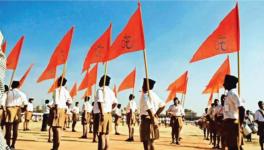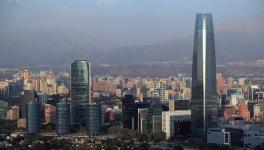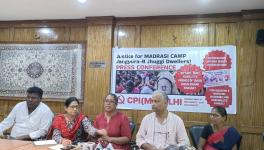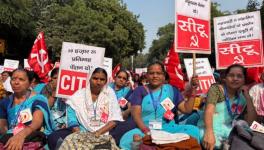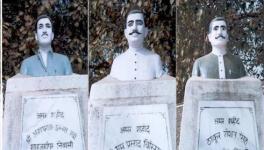The Many Worlds of a Revolutionary: The Bhagat Singh Reader
Edited by Chaman Lal, The Bhagat Singh Reader is a wide-ranging collection of Bhagat Singh's writings. It brings together essays, pamphlets, manifestos, letters, telegrams, and study notes authored by the young revolutionary. The writings span a variety of topics – from socialism to world literature to religion, revealing the full breadth of Bhagat Singh's concerns and preoccupations. The book also sets out the historical and biographical context of each writing in short introductory notes by the editor.
The essay ‘Dharmvar Fasad Te unha de ilaj (The Religious Riots and Their Solution)’ was published in the June 1927 issue of Kirti. After the Jallianwala Bagh tragedy in 1919, the British began a huge propaganda to incite communal riots. This resulted in riots between the Hindus and Muslims in 1924 in Kohat. After this, there was considerable debate on communal riots in the national political arena. Everyone felt the need to end these, but it was the Congress leaders who made an attempt to get Hindu and Muslim leaders to sign a pact to stop the riots.
The condition of Bharatvarsha/India is indeed pitiable today. The devotees of one religion are sworn enemies of the devotees of another religion. Merely to belong to one religion is now considered enough reason to be the enemy of another religion. If we find this difficult to believe, let us look at the fresh outbreaks of violence in Lahore. How the Muslims killed innocent Sikhs and Hindus, and how even the Sikhs did their worst when the opportunity came. This butchering was not done because a particular man committed a crime, but because a particular man is a Hindu or a Sikh or a Muslim. Just the fact of a person being a Sikh or a Hindu is enough for him to be killed by a Muslim, and in the same way, merely being a Muslim is sufficient reason to take his life. If this is the situation, then may God help Hindustan!
Under these conditions the future of Hindustan seems very bleak. These ‘religions’ have ruined the country. And one has no idea how long these religious riots will plague Hindustan. These riots have Hindustan in the eyes of the world. And we have seen how everyone is carried on the tide of blind faith. It is a rare Hindu, Muslim or Sikh who can keep a cool head; the rest of them take sticks and staffs, swords and knives and kill each other. Those who escape death either go to the gallows or are thrown into jail. After so much bloodshed, these ‘religious’ folk are subjected to the baton of the English government, and only then do they come to their senses.
As far as we’ve seen, communal leaders and newspapers are behind these riots. These days the Indian leaders exhibit such a shameful conduct that it is better not to say anything. The same leaders who have taken upon themselves the challenge of winning independence for their country and who don’t tire of shouting slogans of ‘Common Nationality’ and ‘Self Rule… Self-Rule…’ are hiding themselves and are flowing on this tide of religious blindness. The number of people hiding themselves is much less. But leaders who join communal agitations can be found in hundreds when one scratches the surface. There are very few leaders who wish for the welfare of people from the bottom of their hearts. Communalism has come like such a great deluge that they are not able to stem it. It appears as if the leadership of Bharat has gone bankrupt.
The other people who have played a special role in igniting communal riots are the newspaper people.
The profession of journalism that at one point of time, was accorded a very high status has become very filthy now. These people print prominent, provocative headlines and rouse the passions of people against one another, which leads to rioting. Not just in one or two places, but in many places riots have taken place because the local papers have written very outrageous essays. Few writers have been able to maintain their sanity and keep calm on such days.
The real duty of the newspapers was to impart education, eradicate narrow-mindedness in people, put an end to communal feelings, encourage mutual understanding, and create a common Indian nationalism. But they have turned their main business to spread ignorance, preach narrowness, create prejudice, lead to rioting and destroy Indian common nationalism. This is the reason that tears of blood flow from our eyes at Bharat’s present state and the question that rises in our heart is, ‘What will become of Hindustan?’
[…]
Class-consciousness is crucial to stop people from fighting each other. The poor workers and peasants should be made to clearly understand that their real enemies are the capitalists, so they must be careful not to fall into their trap. All the poor people of the world – whatever their caste, race, religion or nation – have the same rights. It is in your interest that all discrimination on account of religion, colour, race, and nationality is eliminated and the power of the government be taken in your hands. These efforts will not harm you in any way, but will one day cut off your shackles and you will get economic freedom.
The people who are familiar with the history of Russia know that similar conditions prevailed there during the rule of the Tsar. There were several groups who kept dragging each other down. But from the day the Workers’ Revolution took place, the very map of the place changed. Now there are never any riots there. Now everyone is considered to be a ‘human being’ there, not ‘a member of a religious group’. The economic condition of the people was very pathetic during the times of the Tsar and this led to rioting. But now when the economic condition of the Russians has improved and they have developed class-consciousness, there is no news from there about any riots.
Though one hears very heart rending accounts of such riots, yet one heard something positive about the Calcutta riots. The workers of the trade unions did not participate in the riots nor did they come to blows with each other; on the other hand, all the Hindus and Muslims behaved normally towards each other in the mills and even tried to stop the riots. This is because there was class-consciousness in them and they fully recognized what would benefit their class. This is the beautiful path of class-consciousness that can stop communal rioting.
Get the latest reports & analysis with people's perspective on Protests, movements & deep analytical videos, discussions of the current affairs in your Telegram app. Subscribe to NewsClick's Telegram channel & get Real-Time updates on stories, as they get published on our website.










